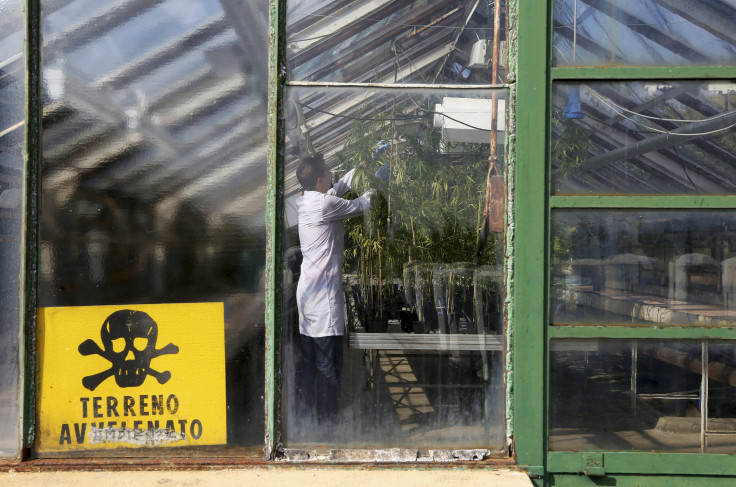Medical Marijuana To Be Grown By Italian Army For Sake Of Ailing Consumers' Wallets

In a move that will hopefully offset the tremendous burden of medical marijuana costs and allay Catholics’ fears over drug consumption, the Italian army will be spearheading a pilot project in the coming year in which it will grow the country’s entire supply of marijuana.
As the system stands now, Italian citizens looking to end joint pain or the occasional bout of insomnia must shell out 38 euros per gram or roughly 1,000 euros per ounce of cannabis at their doctors’ office. These rates soar high above the typical street prices, which can run for at least eight times cheaper than prescriptions. High costs of import and regulation often drive up the prices.
Offsetting the cost by growing the plant within Italian borders isn’t so simple. Most of the population is Catholic, and the Catholic Church has explicitly admonished the use of recreational drugs alongside so-called “substitute drugs,” which, in June, Pope Francis rejected as “a veiled means of surrendering” to one’s health concerns. To keep marijuana costs down, experts argue politics must stay out of it.
Cannabis “is a very effective medicine, but since it's also a drug... there's always fear to use it,” Umberto Veronesi, a former health minister and Italian cancer physician told Reuters. “The same thing happened with morphine, which for years no one would prescribe for the poor patients who were suffering terribly.”
The solution: Satisfy both concerns and remove the plant from the public sphere altogether. Agricultural scientist Gianpaolo Grassi, dubbed Italy’s top cannabis expert, will be adding to his already sizable 70-hectare growing farm, located approximately 40 miles outside Venice, with the new military project. Grassi’s farm is the only place in the country permitted to grow marijuana outdoors. Since 2002, he’s experimented with more than 300 strains of medical marijuana.
For all the project’s ingenuity in keeping people happy, the Italian government has already come down against full legalization. Marijuana’s trajectory in the United States has been predictable on a nationwide scale: a state moves from banning the drug to decriminalizing it or legalizing its medicinal use, to the most extreme cases of Colorado and Washington legalizing full recreational use. In Italy, pot’s future has already been written, according to some officials.
“Curing sick people does not become an excuse to expand the use of the substance," said Senator Carlo Giovanardi, an outspoken Catholic anti-drug campaigner, to Reuters. Giovanardi added the country’s government does not want a “society of zombies” roaming the streets.
The science behind medical marijuana suggests Giovanardi’s fears are largely unfounded. Undead Italians aside, research into cannabis’s therapeutic effects have been robust given the constraints within which the research has been conducted. Marijuana has been shown to decrease patients’ inflammation in cases of arthritis, joint pain, inflammatory bowel diseases like Crohn’s disease and ulcerative colitis, and promote hunger among people suffering from anorexia nervosa.
Italian officials predict the new growing project will help cut the high costs associated with buying medical marijuana. Even with a prescription, consumers are covering the growing costs, the costs to test it for purity, and the costs to import the product from the Netherlands to Italy. At a news conference last month, Italian Health Minister Beatrice Lorenzin said it would be up to the states to decide how much to charge patients. So far about 20 regions have agreed to offer it for free.
And Grassi, after a career of advocating for the plant’s benefits, agrees the solution is a logical one that even the most devout will accept. “Some political decisions are tied to country's Catholic mentality,” he said. “This makes growing medical cannabis agreeable for everyone.”



























